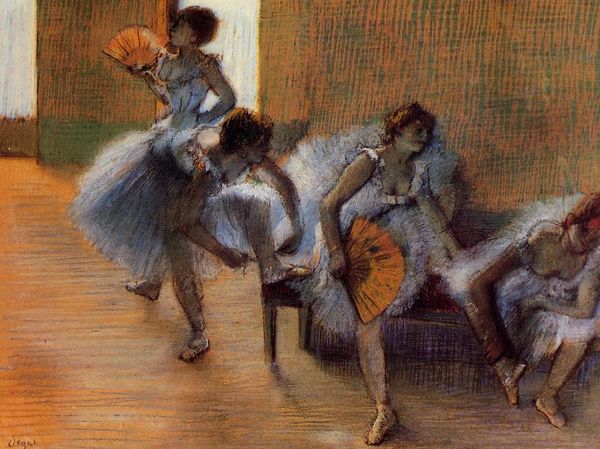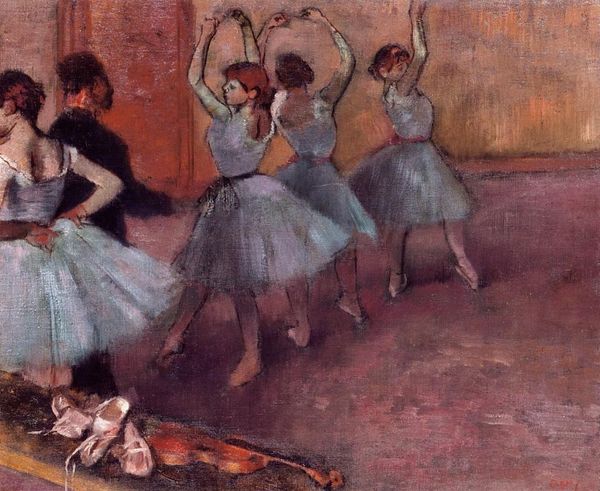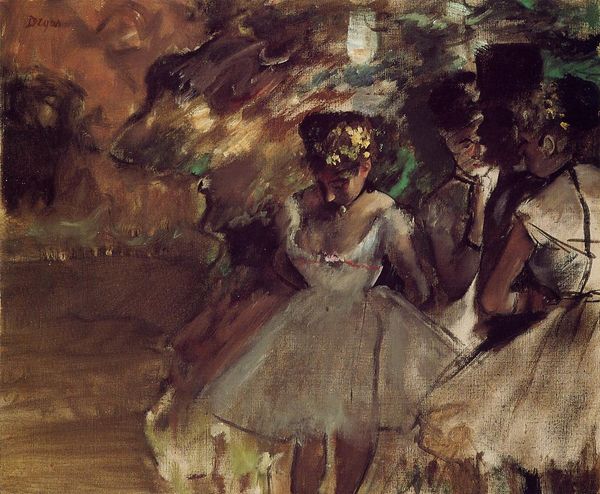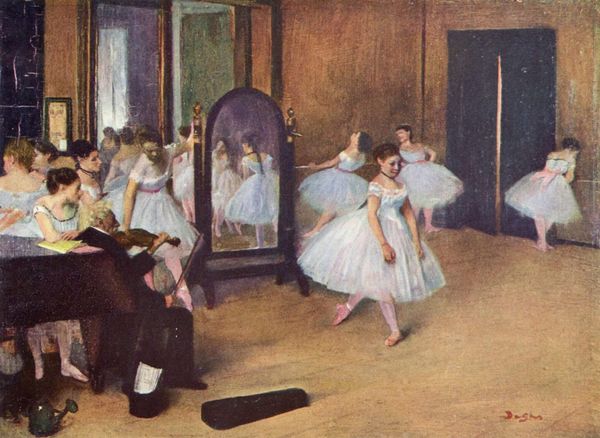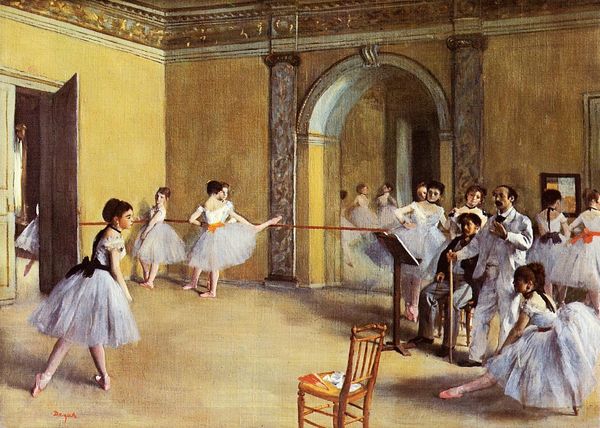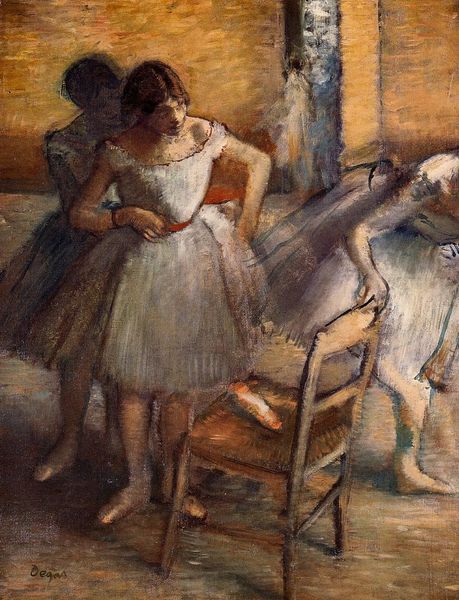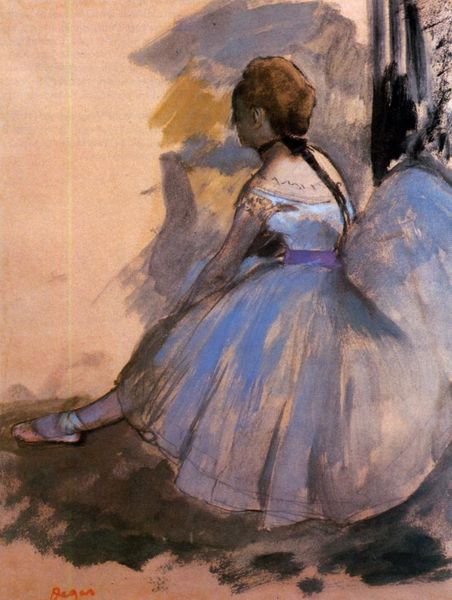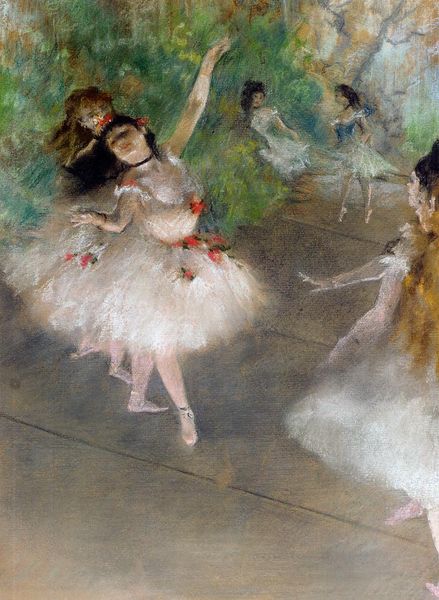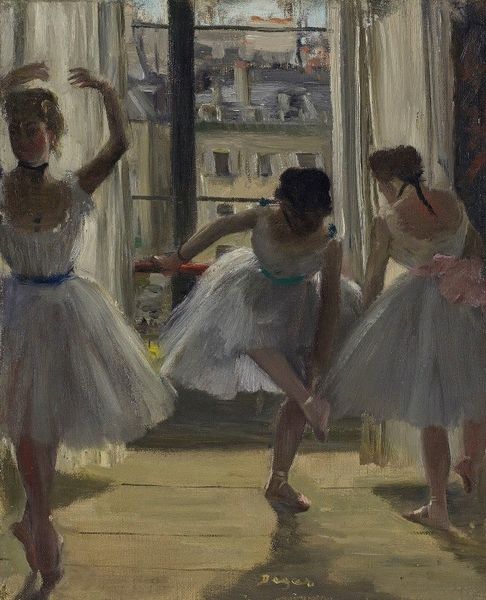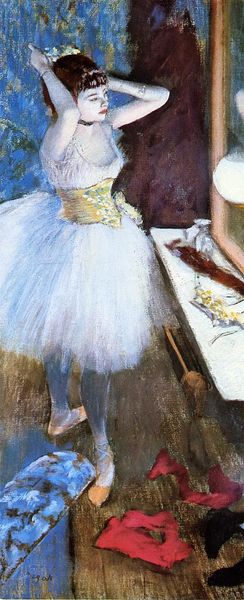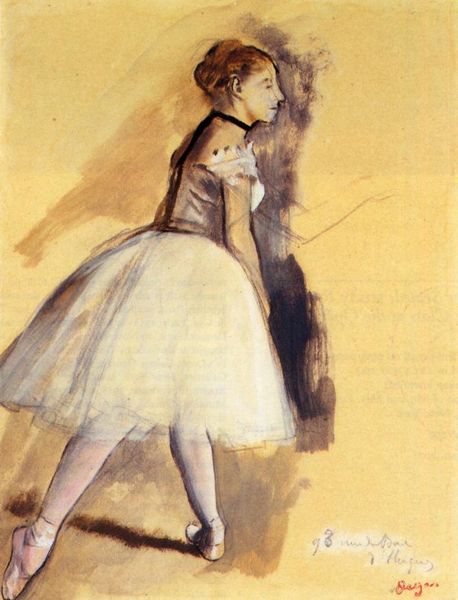
painting, oil-paint
#
portrait
#
painting
#
impressionism
#
impressionist painting style
#
oil-paint
#
figuration
#
oil painting
#
genre-painting
#
history-painting
Copyright: Public domain
Editor: So, this is "Dancers Climbing the Stairs" by Edgar Degas, painted around 1890, using oil paint. The arrangement of the dancers feels very intentional and I'm curious to learn more. What catches your eye in this painting? Curator: Primarily, the spatial arrangement arrests my attention. Degas employs a fragmented perspective, truncating figures and creating a sense of depth through diagonal recession. Notice the abrupt cutoff of the dancers; it directs the eye to the center, doesn't it? Editor: Yes, it does. But the cropped figures also feel very modern. Curator: Precisely. This compositional strategy departs from traditional academic painting. Semiotically, what do you think that cropping might be signifying here? What's the message of that compositional choice? Editor: Hmm...maybe a fleeting moment, an emphasis on movement over static portraiture? Curator: Indeed. Furthermore, examine Degas’ application of paint. The visible brushstrokes and the blending of colors produce a textured surface. How does that contribute to the artwork's message, the way you experience the image? Editor: I think it almost softens the image. Everything seems less defined, more fluid, especially in how it depicts the dancer’s movement. Curator: Consider, then, how Degas utilizes the intrinsic elements of line, form, and color to create a dynamic composition that transcends mere representation. It invites the viewer to analyze the structure, and question their placement within the space. Editor: That’s fascinating. I never considered the spatial arrangement and brushwork to be so deliberate in constructing the artwork's message. Curator: It's the interplay of these formal elements, the visible and invisible, that grants "Dancers Climbing the Stairs" its enduring power. Thank you for the illuminating exchange, it clarified how visual elements orchestrate meaning.
Comments
No comments
Be the first to comment and join the conversation on the ultimate creative platform.
